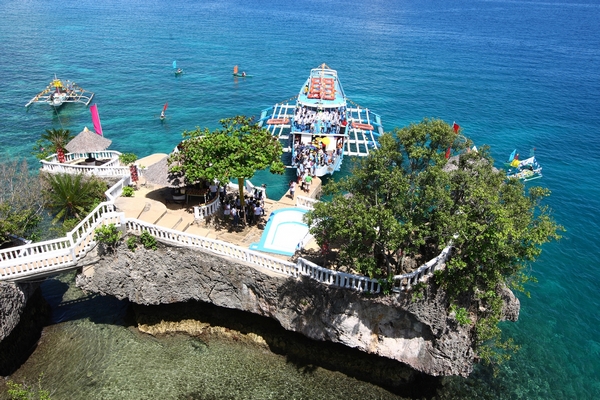
An inter-agency group led by OPAV Michael Dino will inspect resorts in Bantayan and Camotes Islands to ensure compliance with environmental laws. CDN FILE PHOTO
Oslob town, which is famous for its whalesharks, may not be the only coastal town where illegal structures are built within the 20-meter easement zone.
The Office of the Presidential Assistant for the Visayas (OPAV), together with the Department of Tourism – 7 (DOT – 7) and the Department of Environment and Natural Resources – 7 (DENR – 7), will visit the islands of Bantayan and Camotes this month to inspect resorts and establishments by the sea.
In a phone interview, Jonjie Gonzales, OPAV chief of staff, told Cebu Daily News that aside from Bantayan and Camotes Islands, they will also visit Siquijor Island. They are just finalizing their schedules.
He said OPAV Secretary Michael Dino will meet the local government officials of Bantayan, Camotes and Siquijor Islands next week before proceeding with the inspection.
“We will be accompanied by Lt. Gen. Paul Atal of Centcom (Armed Forces of the Philippines- Central Command) because we want to make sure our tourism assets as well as our guests are secure since Visayas is practically the tourism capital of the Philippines,” Gonzales added.
Bantayan Island, located more than 138 kilometers northwest of Cebu City, has three municipalities — Bantayan, Santa Fe, and Madridejos.
Camotes Island, located more than 88 kilometers northeast of Cebu City, is comprised of four towns namely Poro, Pilar, San Francisco and Tudela.
Oslob
The inter-agency task force, led by Dino, visited Oslob last Thursday to inspect establishments along its shoreline.
They found out that of the 47 establishments built along the shore, 34 had no wastewater discharge permits. These were mostly small resorts.
Dino has been reiterating his calls for stakeholders in Oslob and other places in Cebu to comply with environmental standards or face the same fate as that of Boracay.
Provincial Tourism
Officer Joselito “Boboi” Costas was not surprised by the recent findings of the different government agencies.
Costas said they inspected establishments in Oslob town in September 2017, together with the town’s sanitary inspector and tourism officers and gave recommendations to the local government unit (LGU) of Oslob to correct the mistakes.
“We were doing the inspection five months before President Duterte ordered Boracay’s closure,” said Costas.
Costas said they discovered that about 76 percent of business establishments, such as accommodations and restaurants, did not secure sanitary permits, while 19 percent did not have business permits.
One of their suggestions was to put a carrying capacity in Sumilon Island’s sandbar, in which the local officials will allow only 522 visitors per day.
“The Cebu Provincial Government has always been proactive in making Cebu a sustainable tourist destination,” he added.
However, Nestor Canda, DENR – Task Force Foreshore Area Management coordinator, told CDN in a separate interview that they still need to conduct another inspection on establishments in Oslob that have allegedly violated the desired easement zone.
Canda said they will deploy a team to check and measure establishments who initially violated the 20-meter easement zones.
“Dili man ta nga general lang nga mosulti sa usa ka structure nga apil sila sa ni violate (We cannot generalize that the area is filled with violators just because one structure violated the easement zone. That’s why we have to check and measure),” Canda said.
“Sa atong meeting mangayo ta sa ilang support nga dili ta maglisod sa access in going from one resort to another (during our checking and inventory). Mas nindot nga open gate sila for inspection and whatever documentation needed sa office,” Canda said.